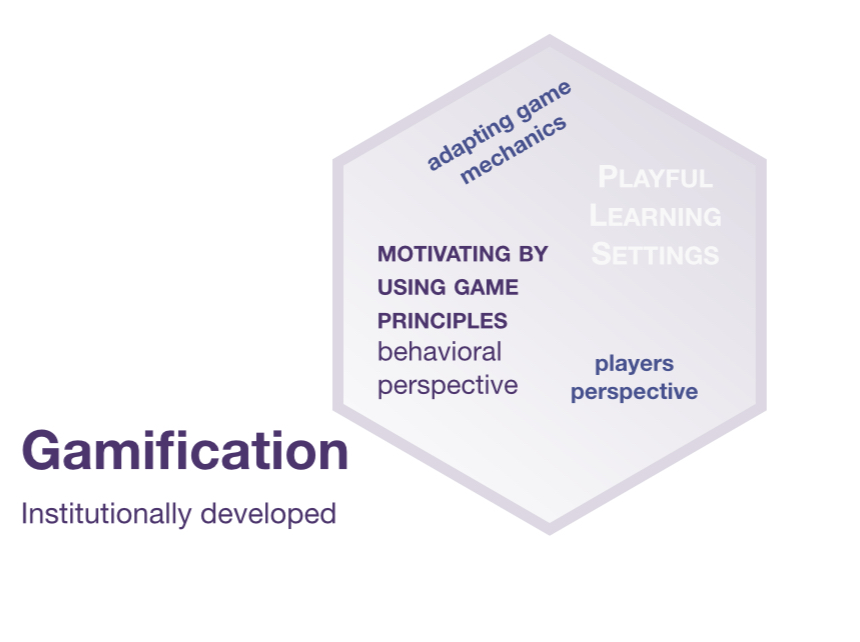PLeS-Model
Playful Learning Settings
INTRODUCTION
The teacher’s students are playing games during the lesson. However, shouldn’t they listen to the explanation, study and work on their exercises in their coursebooks? Of course they should. They need to master the subject matter. Fortunately there are more roads to achieve learning objectives.

One such road is creating Playful Learning Settings (Gamification). Gamification is the practice of making task-related activities more like games. Game-design elements are used in non-game contexts. In Playful Learning Settings the focus will be on Game-Based Learning and Learn-Based Game Development.
GAME-BASED LEARNING
Game-Based Learning is a didactic strategy that uses the game to teach a content and learn in a fun way. The tasks are created by the teacher.
The benefits of Game-based learning:
- all students are involved.
- learners learn best when they are also having fun.
- student engagement increases. Their attention span is longer when they are involved in the activity.
- students feel like they have ownership over their learning.
- social skills are developed. Since lots of games must be played in pairs or groups. Playing games involves peer competition and teamwork.
- freedom to fail: learners can simply try again so there is a more relaxed atmosphere.

LEARN-BASED GAME DEVELOPMENT
A second road to achieve the objectives are Student-made games. This is a creative way to assess student’s learning for any subject. Starting from writing their own quizzes or creating a game from scratch, there are many ways to give room to your student’s creativity to make their learning progress playable (for themselves and their classmates). On top of the benefits described in Game-Based-Learning, there is an extra advantage. In Bloom’s Taxonomy the highest level is reached when students create their own games.

GAMIFICATION
Acknowledging the students’ progress is highly motivating for the learners. They learn best when they are rewarded for their efforts.
In gamification, you take inspiration from games and use similar reward systems in class. There are various ways to organize a reward system other than marks.
- A point system might help to monitor students’ achievements.
- The teacher could include elements of competition. (Best student? First to have finished?).
- Students might get a reward when they succeeded in completing the task. (Leave five minutes earlier? Get a sticker?).
- Students earn badges for achievements.
- Students are allowed to advance to a more difficult level or do a fun activity.
- Gamification doesn’t justify itself: It must be considered an overall strategy. Do not invest in gamification just because it is trendy.
- A balance between screen time and other activities is essential.
- It is a time-consuming activity. Teachers need time do other tasks in class as well.

Be aware:
„If a home lacks a solid foundation, simply putting a new coat of paint will not make much of a difference.“
Susan Jacobs
CONCLUSION
Although there are a few disadvantages to using games in class, the benefits of game elements in education outweigh traditional ways of practicing learning content. Games in education are becoming increasingly popular, since they enhance learning.
VIDEO EXAMPLE